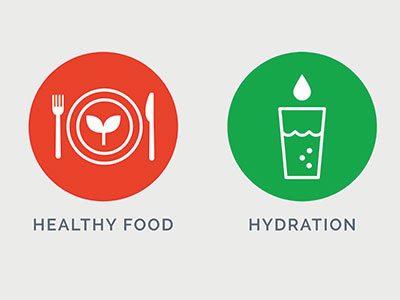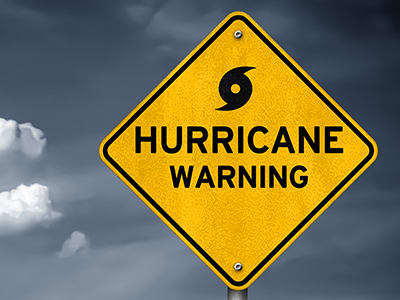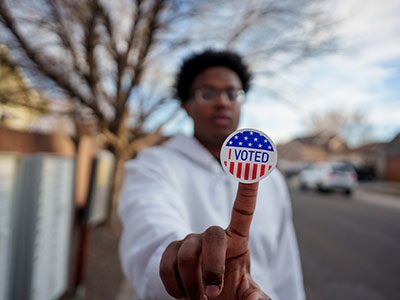E-cigarettes are a growing concern because of their availability, addictiveness and attractiveness to teens. But what exactly are e-cigarettes and why are they so bad? And how should you talk to your kids about their potential dangers? Below are answers to some common questions many parents have about vaping, e-cigarettes and teens.
What are e-cigarettes?
Electronic Nicotine Delivery Systems (ENDS) – also known as e-cigarettes, personal vaporizers, vape pens, vaping devices, or by brand name, e.g., JUUL – are battery-powered devices that produce a vaporized mixture of liquid composed of flavorings (such as fruit, candy, peppermint or chocolate), chemicals and often nicotine that are inhaled by the user. The devices can resemble traditional tobacco products like cigarettes, but teens are more likely to use devices that pass as small common gadgets such as USB memory sticks or pens.
According to the American Academy of Pediatrics, e-cigarette use has sharply risen and is now the most commonly used nicotine product among youth. The vaping “epidemic” has infected 12 of every 100 high schoolers (who in 2017 endorsed use of an e-cigarette in the last 30 days), with use starting as young as 12 years old.
Why are e-cigarettes dangerous?
The harms from e-cigarettes come in at least three ways. First, the vapor itself contains toxic and carcinogenic chemicals and metals that harm the lungs short-term with inflammation (which may make youth more prone to pneumonia, asthma attacks and decreased sports endurance). Inhaling hot vapor also may temporarily cause dehydration and taste bud damage that results in decreased sense of taste or smell (“vaper’s tongue”), as well as nosebleeds. The long-term effects of vaping on the body are not yet fully known, so there is no known safe amount that can be recommended…even if it’s “nicotine-free.”
Second, the developing brain (up until age 25 years) is uniquely susceptible to nicotine. Even one inhalation of nicotine can alter the brain to crave more and start the cycle of vaping more often to get rid of unwanted nicotine withdrawal symptoms. Imagine what happens in the brains of teens who vape a whole JUUL pod per day (each pod contains about as much nicotine as a pack of cigarettes). If your family has a history of addictions, your teen is at higher risk of nicotine dependence when using ENDS.
The negative effects of nicotine on the body are cumulative and include increased blood pressure and heart rate and stomach ulcers. Youth may complain of heart racing, chest palpitations or abdominal pain, especially if they also consume caffeine from coffee, soda or energy drinks. Life threatening arrhythmias (abnormal heart rhythms) and heart disease may occur long-term.
Third, vaping poses risks to others. Accidental ingestion of the highly concentrated e-juice used to refill the e-cig devices is an increasing source of infant and child nicotine poisonings. While some e-cigarette devices have cartridges that are replaced as a whole, many have pods that require refilling with a dropper from a bottle of e-juice obtained online or from a vape shop. Adults should keep these products out of children’s reach. E-cigarettes that have substantial plumes of vapor also pose a health risk for bystanders who breathe in the polluted air. However, certain low-vapor devices are more popular with youth, e.g, JUUL, PHIX, and Suorin, possibly because fewer plumes facilitate undetected use on school grounds.
Although most youth hold negative views about traditional cigarette use that prevent them from uptake, they do not perceive harm in e-cigarette use. Unfortunately, kids who use e-cigarettes are more likely to transition to traditional cigarettes and suffer the better-known negative health consequences.
How do I talk to my teen about e-cigarettes?
It’s very important to communicate openly with your teen about e-cigarettes and vaping; ideally starting just before middle school. You can start a conversation with questions like “Do any of your friends use electronic cigarettes or vape?” Or “what are your thoughts about vaping?” Teens rarely identify themselves as “smokers” or “vapers” or “regular users.” One way to get around this is to ask them specific questions about behaviors, such as “Have you ever tried an e-cigarette?”
Teens respond better to specifics about the dangers of ENDS (see above), rather than being told “it’s bad” or “just say no.” Most young adults have a negative view of people who use traditional tobacco products, but that view doesn’t always transfer to e-cigarettes. By pointing out that e-cigarettes contain nicotine and still carry some of the same risks as other forms of tobacco, you can help them make that connection. You should also remind them that the contents of what they inhale may contain nicotine despite labeling, or may be spiked with cannabis extract without being able to tell (or smell).
You can also have a cigarette smoker in the family explain the challenges they’ve faced cutting down or quitting their nicotine addiction as a prevention message to youth. While adults already addicted to nicotine products may use ENDS as a harm-reduction or cessation strategy, it is important to point out that the use of ENDS by teens can lead to nicotine addiction since their brains are still developing.
If you don’t seem to be getting through to your teen, consider enlisting your pediatrician or adolescent medicine specialist to talk with them confidentially. Youth are more likely to engage in discussions about risk behaviors, like use of e-cigarettes, if they have time alone with their health care provider.
How can I tell if my teen is using e-cigarettes?
Unfortunately there is no easy way to tell if your teen is using e-cigarettes. Unlike traditional cigarettes, ENDS come in all shapes and sizes, may have small plumes of vapor that can be blown away discretely, and don’t have the odor associated with burning tobacco. It is definitely not a good idea to go through your child’s room or bag looking for e-cigarettes, cartridges, or containers of e-juice. Instead, opt for open and consistent communication, especially if you notice unfamiliar USB drives or parts in the trash bin. Warning signs that your child may be using nicotine products relate to the side effects, such as increased thirst or sudden avoidance of caffeinated products.
What should I do if my teen smokes e-cigarettes?
If your teen does smoke e-cigarettes, you should talk to them about their expectations. Ask them how often they think it’s okay to use cigarettes without long term health consequences. Then explain that vaping just once a week can easily increase to twice a week, then daily and eventually lead to addiction.
Emphasize that you want your teen to quit vaping, but don’t use commands, threats or ultimatums. Instead, ask your teen why they started using ENDS and what are the good and not-so good things about their use. Understanding what motivates them can help you address the situation and help them identify ways to cut down or stop. Once you set a quit date, co-develop a plan to help them distract themselves from cravings and have them write it all down. Encourage them to hang out with friends who don’t use ENDS or smoke cigarettes and practice how they might turn down offers to use by peers.
Your healthcare provider or school counselor can also provide support, or you can call 1-800-QUIT-NOW – a toll-free number operated by the National Cancer Institute that will connect you directly to your state’s tobacco Quitline. Quitlines offer free advice and counselling to teens and adults, information about nicotine replacement products, self-help materials and referrals to other cessation resources. Most teens should be able to quit nicotine use with the support of their family and friends, but your adolescent medicine specialist or pediatrician can help make decisions about whether to use nicotine replacement therapy.
 https://riseandshine.childrensnational.org/wp-content/uploads/2024/11/boost-immune-system-feature.jpg
300
400
Danielle Robbins
https://riseandshine.childrensnational.org/wp-content/uploads/2017/11/childrens_riseandshine_logo.jpg
Danielle Robbins2024-11-19 15:04:122024-11-21 12:06:317 ways to boost your child’s immune system
https://riseandshine.childrensnational.org/wp-content/uploads/2024/11/boost-immune-system-feature.jpg
300
400
Danielle Robbins
https://riseandshine.childrensnational.org/wp-content/uploads/2017/11/childrens_riseandshine_logo.jpg
Danielle Robbins2024-11-19 15:04:122024-11-21 12:06:317 ways to boost your child’s immune system


 Brooke Bokor, MD, MPH, was an Assistant Professor in the Division of Adolescent and Young Adult Medicine at Children's National.
Brooke Bokor, MD, MPH, was an Assistant Professor in the Division of Adolescent and Young Adult Medicine at Children's National.


















Leave a Comment
Want to join the discussion?Feel free to contribute!